Conwy Castle In Snowdonia: Outstanding Medieval Fortification In Europe
A. Sutherland - AncientPages.com - Conwy Castle in Snowdonia is considered one of Europe's most impressive military structures of the late 13th century and early 14th century that survived until today.
Image credit: Adobe Stock - Lukasz Pajor
Kings and feudal lords ruled over their lands from the Middle Ages' grand and massive power centers.
Conway Castle is undoubtedly one of Britain's most impressive and majestic medieval fortresses. It is an impressive fortress and a fortified town, the massive accompanying walls forming an integral portion of the defense.
The town walls "are over a mile in length and are in a singularly good state of preservation; there are twenty-one towers, arranged at regular intervals along this enceinte, and four gates, over one of which is a row of machicoulis, twelve in number, projecting from the upper part of the wall. It was also protected by a dry ditch and with drawbridges placed before the gateways..." 1
The Outer Ward, with the great hall and chapel. Image credit: Albertran - CC BY 3.0
Conwy Castle was built for Edward I, King of England (1272 – 1307), by the master military architect of his age, James of St. George d'Esperanche (c.1230 – 1309). Master James was an architect from Savoy responsible for designing many of Edward I's castles, including Conwy.
The total cost of the new four castles in Wales was more than ten times Edward I's annual revenue, but it was necessary; a revolt could break out at any time.
The site for the construction of the Conwy Castle was perfectly chosen. The structure was a masterpiece of design. Conwy Castle was previously occupied by Aberconwy Abbey, located on a hill looking over the critical crossing over the River Conwy.
This famous medieval fortress is exceptionally well preserved. It contains the most intact set of medieval royal apartments in Wales. The high curtain wall and eight lofty towers built over 700 years ago are still impressive.
Reconstruction of Conwy Castle and town walls at the end of the 13th century. Model located in Conwy Castle. Image credit: Hchc2009 - CC BY-SA 3.0
Based on ancient sources, Conwy Castle and the associated walled settlement – a garrison town - were built within five years under the leadership of Master James and 1,500 craftsmen working at the construction site.
Two barbicans (fortified gateways), eight massive and 21-meter high towers, and a great bow-shaped hall all sit within its distinctive elongated shape due in part to the narrow rocky outcrop on which the castle stands.
No concentric walls within walls were needed in this mighty military fortress.
The strength and inaccessibility of Conwy Castle come from the massive rock on which it stands. The castle has a postern gate leading down to the river, allowing resupplying from the sea.
The rectangular castle is built from local and imported stone material and occupies a coastal ridge, initially overlooking a crossing point over the River Conwy.
'
Conwy Castle is seen from the west, showing the barbican guarding the Outer Ward. Image credit: David Dixon - CC BY-SA 2.0
The outer wall remains with a great hall, chambers, kitchen, an Inner and Outer Ward, private, well-lit, heated rooms, and a royal chapel. The inner ward was a private area for King Edward and his queen, Eleanor of Castile, and the family.
There were only two approaches to the castle; the most important was the main entrance in the form of a high stone ramp, running up towards a swinging or pivoting "drawbridge"; the ditch was 28 feet deep from the drawbridge to the bottom.
Over the next few centuries, the castle played an important part in several wars. In 1665, the castle was ruined entirely; in the late 18th and early 19th centuries, it became an attractive destination for artists, and today, it's a tourist attraction.
Written by – A. Sutherland AncientPages.com Staff Writer
Updated on January 29, 2024
Copyright © AncientPages.com All rights reserved. This material may not be published, broadcast, rewritten or redistributed in whole or part without the express written permission of AncientPages.com
Expand for referencesReferences:
- Ashdown, Charles H., British Castles
K. Ralls-MacLeod,I. Robertson,The Quest for the Celtic Key
More From Ancient Pages
-
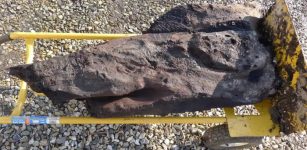 Surprising Discovery Of Oldest Decoratively Carved Wood In Britain
Archaeology | Jun 7, 2023
Surprising Discovery Of Oldest Decoratively Carved Wood In Britain
Archaeology | Jun 7, 2023 -
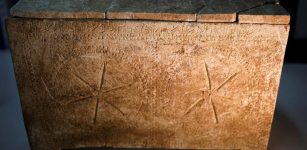 ‘Ali Baba Cave’ Treasures: Burial Boxes Inscribed With Jesus’ Name May Help Reconstruct Jesus’ Life And Death
Archaeology | Mar 21, 2017
‘Ali Baba Cave’ Treasures: Burial Boxes Inscribed With Jesus’ Name May Help Reconstruct Jesus’ Life And Death
Archaeology | Mar 21, 2017 -
 Ancient Burial Chambers Decorated With Mythological Figures Of Hercules, Medusa, Eros – Unearthed In Bursa, Turkey
Archaeology | Feb 21, 2017
Ancient Burial Chambers Decorated With Mythological Figures Of Hercules, Medusa, Eros – Unearthed In Bursa, Turkey
Archaeology | Feb 21, 2017 -
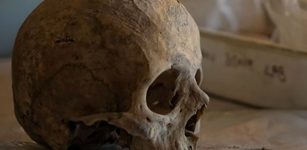 DNA Of 10,000-Year-Old Skeletal Remains And Kinship Of Earliest World Settlers
Archaeology | Apr 21, 2021
DNA Of 10,000-Year-Old Skeletal Remains And Kinship Of Earliest World Settlers
Archaeology | Apr 21, 2021 -
 Mysterious Advanced Underground Civilization And A Secret Society – Technology, History, Language And Goals – Part 2
Civilizations | Apr 23, 2018
Mysterious Advanced Underground Civilization And A Secret Society – Technology, History, Language And Goals – Part 2
Civilizations | Apr 23, 2018 -
 Kahina – The Prophetic Berber Queen Who Resisted The Muslim Invasions Of The Numidia Kingdom
Featured Stories | Aug 14, 2021
Kahina – The Prophetic Berber Queen Who Resisted The Muslim Invasions Of The Numidia Kingdom
Featured Stories | Aug 14, 2021 -
 Oldest case of leukemia found on 7,000-Year-old skeleton
News | Aug 23, 2015
Oldest case of leukemia found on 7,000-Year-old skeleton
News | Aug 23, 2015 -
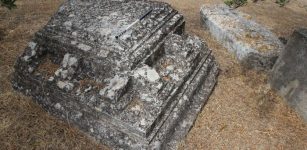 LIDAR Disovers 2,000-Year-Old Roman Temple Under Church In Danilo, Croatia
Archaeology | Dec 6, 2022
LIDAR Disovers 2,000-Year-Old Roman Temple Under Church In Danilo, Croatia
Archaeology | Dec 6, 2022 -
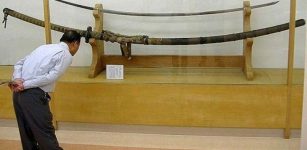 The Norimitsu Odachi – Giant Japanese Sword Remains An Enigma
Artifacts | Mar 22, 2019
The Norimitsu Odachi – Giant Japanese Sword Remains An Enigma
Artifacts | Mar 22, 2019 -
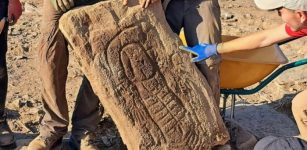 3,000-Year-Old Stela Challenges Assumptions Of Gender And Social Roles In Prehistoric Times
Archaeology | Nov 16, 2023
3,000-Year-Old Stela Challenges Assumptions Of Gender And Social Roles In Prehistoric Times
Archaeology | Nov 16, 2023 -
 Immortal Mimi Spirits In Beliefs Of Aborigines Of Arnhem Land
Featured Stories | Mar 26, 2020
Immortal Mimi Spirits In Beliefs Of Aborigines Of Arnhem Land
Featured Stories | Mar 26, 2020 -
 Ancient Roman Wine Production May Hold Clues For Battling Climate Change
Featured Stories | Jan 4, 2024
Ancient Roman Wine Production May Hold Clues For Battling Climate Change
Featured Stories | Jan 4, 2024 -
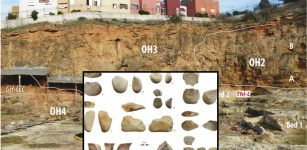 1.3-Million-Year-Old Stone Age Axe Discovered In Morocco Pushes Back The Start Sate Of Acheulian Technology In North Africa
Archaeology | Jul 30, 2021
1.3-Million-Year-Old Stone Age Axe Discovered In Morocco Pushes Back The Start Sate Of Acheulian Technology In North Africa
Archaeology | Jul 30, 2021 -
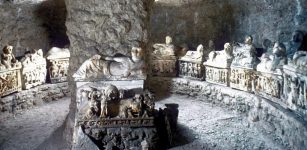 Image Of The Day: The Inghirami Tomb At Volterra, Italy
Image Of The Day | Sep 9, 2015
Image Of The Day: The Inghirami Tomb At Volterra, Italy
Image Of The Day | Sep 9, 2015 -
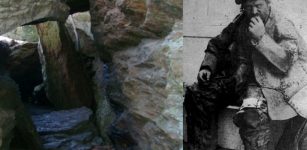 Who Was The Mysterious Old Leather Man?
Featured Stories | Sep 1, 2021
Who Was The Mysterious Old Leather Man?
Featured Stories | Sep 1, 2021 -
 Ilopango Volcanic Eruption In Maya World 1590 Years Ago – New Study
Archaeology | Oct 2, 2020
Ilopango Volcanic Eruption In Maya World 1590 Years Ago – New Study
Archaeology | Oct 2, 2020 -
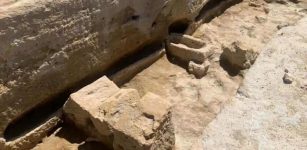 Rare Phoenician Necropolis Discovered In Andalucia, Spain Is Extraordinary, Scientists Say
Archaeology | May 2, 2022
Rare Phoenician Necropolis Discovered In Andalucia, Spain Is Extraordinary, Scientists Say
Archaeology | May 2, 2022 -
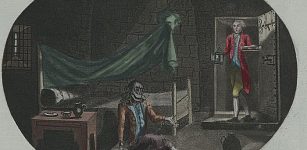 On This Day In History: “Man In The Iron Mask” Died In The Bastille, Paris, France – On Nov 19, 1703
News | Nov 19, 2016
On This Day In History: “Man In The Iron Mask” Died In The Bastille, Paris, France – On Nov 19, 1703
News | Nov 19, 2016 -
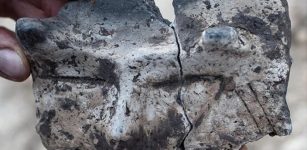 Unusual 7,000-Year-Old Jar Decorated With A Horned Face Found In Poland
Archaeology | Sep 3, 2020
Unusual 7,000-Year-Old Jar Decorated With A Horned Face Found In Poland
Archaeology | Sep 3, 2020 -
 Mystery Of Biblical Noah’s Strange Connection With Red-Skinned Giants And The Watchers – Celestial Secrets – Part 2
Biblical Mysteries | Jan 28, 2021
Mystery Of Biblical Noah’s Strange Connection With Red-Skinned Giants And The Watchers – Celestial Secrets – Part 2
Biblical Mysteries | Jan 28, 2021




